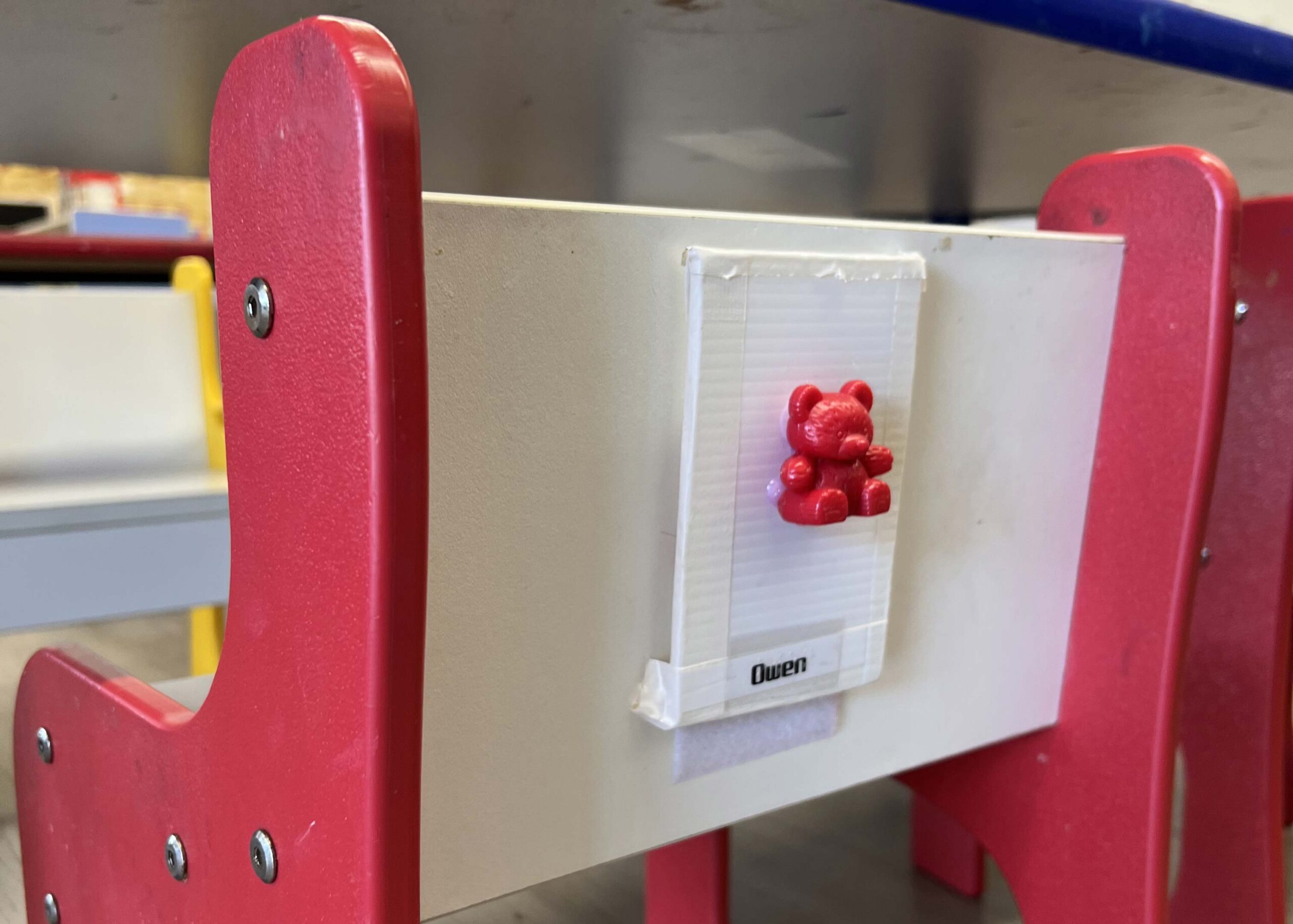Tactile cues used by Beyond Blindness help students anticipate events and prepare for daily activities.

For children who are blind, have low vision, or have other disabilities such as speech delays, tactile learning presents a unique opportunity to enhance their skills. Tactile cues — or touch cues — can help them understand people, places, and activities through movement and touch. Here are a few impactful ways Beyond Blindness uses tactile cues around campus and in the classroom to help children achieve independence:
- Playground cues like a chain attached to the wall help guide and direct children to the swings.
- To help infants and toddlers who are being potty trained, we have tactile cues in the form of diapers glued to pieces of cardboard that they can touch to create memory/signals for toileting.
- Each chair in the classroom has a tactile cue on the back, such as a green frog. If a child has a green frog on their chair, the green frog is also in their cubby — it’s a way to help students orient themselves and create independence.
- The professional staff incorporates other touch cues to help children communicate. Many are simple things that can also be done at home, such as a placing a rubber band around a cup of milk so your child knows that is the milk cup versus the water cup.
- Our classrooms are also designed as big, open spaces so they can accommodate wheelchairs and other mobility aids.
- One of the better-known tactile cues is the white cane. White Cane Awareness Day is coming up on October 15 and it’s a great opportunity to learn more about this simple but very effective aid that provides increased support and independence for the visually impaired.